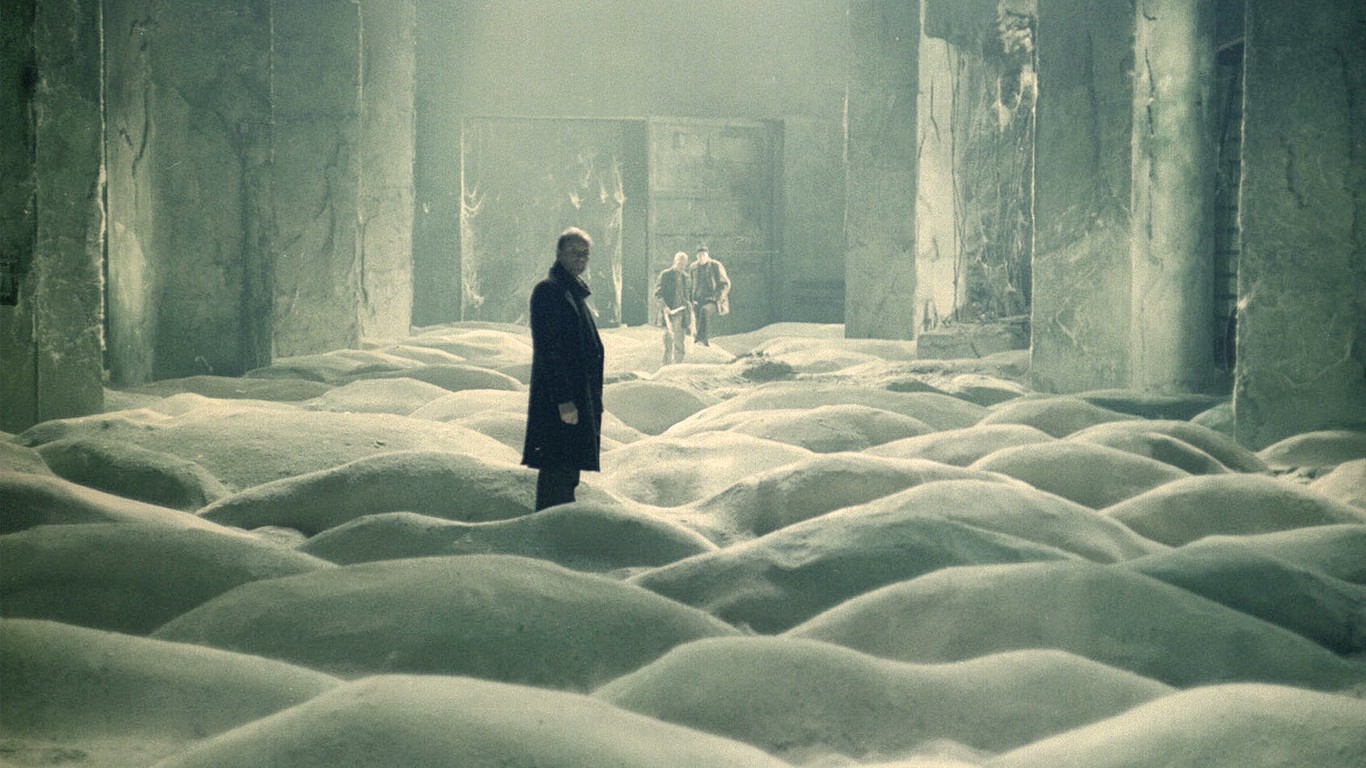
When ranking the movies of Andrei Tarkovsky, there is one very important thing to keep in mind: every single film he made is a masterpiece. With only seven features to his name, no film by Tarkovsky ever feels like a compromise between him and meddlesome producers — even though there were many of them. Instead it works as the perfect expression of his art and philosophy.
He is one of cinema’s finest stylists, with as unique a style as Mizoguchi, Renoir, Bresson or Dreyer. Yet, what truly sets him apart was his reluctance to ever make a movie in the manner of anyone else. As he famously said, whenever a scene looked like it would approximate the work of another, he would modify it so it would retain his original vision.
He used directing and editing as a way to give meaning to the way humanity remembers things, and the way we order our own memories. Avoiding the usual pitfalls of heavy dialogue and plot, he sought to create a body of work that could only be described as ‘cinematic’.
Favouring long and expressive takes, an abundance of metaphors that can be interpreted any such way, and a richness of texture and sound design arguably unmatched in cinema, Tarkovsky’s work has an extraordinary purity which gives it an almost holy aspect. Therefore, ranking Tarkovsky’s works is a task in figuring out which films are even greater than the others.
As a result, think of it less as from worst to best than from least great to greatest. And so possibly as futile as trying to keep a flame going when pacing up and down an abandoned swimming pool, here are his works ranked from worst to best.
7. Nostalghia (1983)
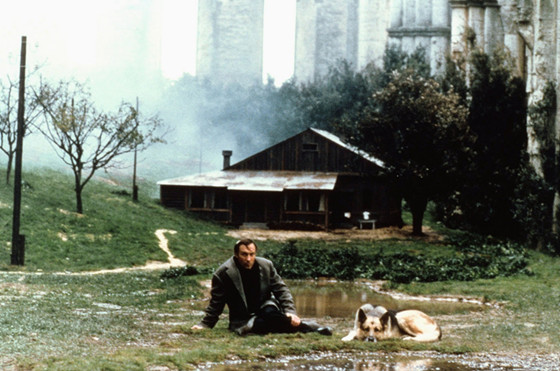
Nostalghia is the most ignored among Tarkovsky films, and perhaps unfairly so. His first film directed outside of his native USSR, it saw him team up with an Italian production company to tell the story of a Russian writer who travels to Italy in order to research an 18th Russian composer who made his home there before going back to Russia to commit suicide.
Reflecting perhaps Tarkovsky’s own estrangement from his home country, the aptly named Andrei — played by the great Russian actor Oleg Yankovsky — longs for his hometown, and feels out of place among the frescoes of Northern Italy. He even turns down the advances of his interpreter.
Things start to get rather more interesting however, when he meets a local man named Domenico — played by Erland Josephson —who endlessly attempts to get across a mineral pool whilst holding a lit candle. Like with Josephson’s later character in The Sacrifice, he believes that this act is what is needed to save the world. What Andrei later learns about Domenico is that he harbours a great secret, leading to an intriguing interrogation into the nature of mankind.
The ending, featuring Andrei trying to honour the wishes of his friend by carrying the candle across the empty pool, ranks as perhaps the most emblematic scene of Tarkovsky’s entire filmography. We cannot say for sure what it means, but in the attempt to poeticise the futility of man, he reveals to us our true nature in all its glorious complexity.
6. Ivan’s Childhood
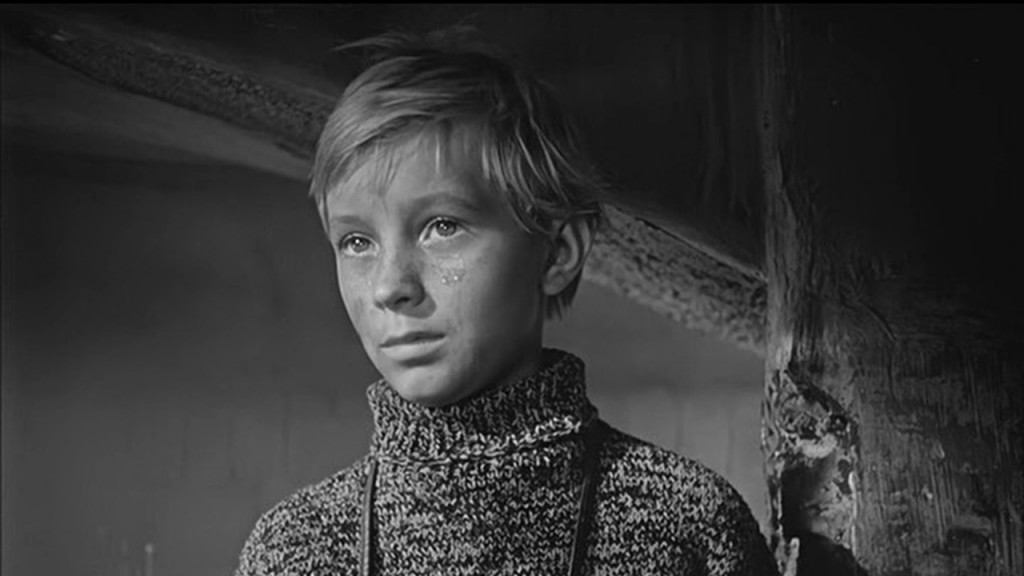
Ivan’s Childhood is Tarkovsky’s first film, and it is by far his most narratively coherent. Nonetheless, even from his early age, his mastery of non-traditional cinema was already seen to be blossoming in full form. Set during World War 2, the titular character is an orphan boy who works for the Russian front as a reconnaissance man.
The story of his missions is interspersed with lengthy dream sequences and non-linear flashbacks that show at this early stage Tarkovsky’s interest in telling emotionally heavy stories instead of ones dictated by the usual rules of plot.
It is not a wholly positive film, but there are some moments that contain great joy. A case in point is the romantic exchange between Masha and Captain Kholin, set among the bare trees, beautifully caught in crisp black-and-white, that seem to be the most carefree of Tarkovsky’s entire filmography.
Yet contrasted with the eventual bleakness of the movie, it seems Tarkovsky was putting these in as a way of making this ending feel even more poignant. Made during a great time for Soviet WW2 cinema, including The Cranes are Flying and Ballad of A Soldier, Ivan’s Childhood is Tarkovsky’s brilliant announcement to the world of film that there was a new auteur on the block.
5. The Sacrifice
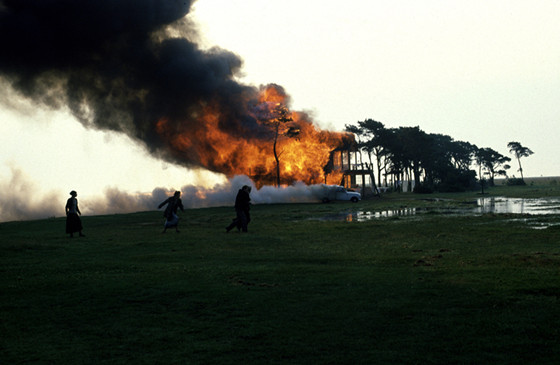
Whilst not shot in the same island, Faro, where Ingmar Bergman lived and made most of his films — it was actually filmed on the nearby island of Gotland — Tarkovsky still deployed two of his famed colleagues, cinematographer Sven Nykvist and actor Erland Josephson, to make a film concerning a subject close to the Swedish director’s heart: man trying to make a deal with God.
Made as the director knew that he was dying, it is his last testament to the world. The protagonist is a former theatre actor who gave up his former profession in order to become a critic. We see him plant a tree on his birthday, imbued with the knowledge that this tree will live long after his death. His birthday celebrations are cut short however, when news emerges on the television that there may be an impending nuclear holocaust.
Thus he gets the idea that the only way to stop such a thing from happening is sacrificing his own home; hence the title of the movie. It sees Tarkovsky using many of the same tools that gave Ingmar Bergman’s religious films such dramatic weight and deploying them for his own, far more ambiguous purposes.
Seeing how events affect one man in the midst of a potential global crisis, and in the process leading to a controversial view of how man should relate with God, Tarkovsky created an ambivalent masterpiece that remains underrated till this day.
4. Stalker (1979)

Three men take a journey to a place called “The Zone,” a place that apparently satisfies all of your innermost wishes and needs. The leader is known as the “Stalker,” and the two followers are a writer and a professor.
As they go deeper and deeper on their way to this area, key questions of the nature of man are constantly dissected, with no easy answers given. Much like Solaris, the science-fiction hook isn’t deployed in the conventional way, instead used to celebrate strange and weird landscapes and to penetrate the nature of a strange and shifting society.
Also like that film and its mysterious planet, “The Zone” is not what it seems, with the final Room perhaps unable to grant people what they want. This theme is extended in the film’s long philosophical conversations, with the characters constantly going back and forth on what they think this place may be. Frustrating for those who expect science-fiction to tie up all loose ends, for the more poetic-minded, it is a highly rewarding journey.
Is the Room the subconscious, is it Soviet Society, or is it even heaven? Nobody really knows. Once we get to this place, its clear Stalker is an allegory, but what its an allegory for really depends on your imagination. No other filmmaker ever invited a viewer in more to participate in the meanings of his movies. His slow and enigmatic tone, stressed by the length of his shots, allows the viewer to immerse themselves with his world, in the process possibly ruminating on their own lives.
3. Mirror (1975)
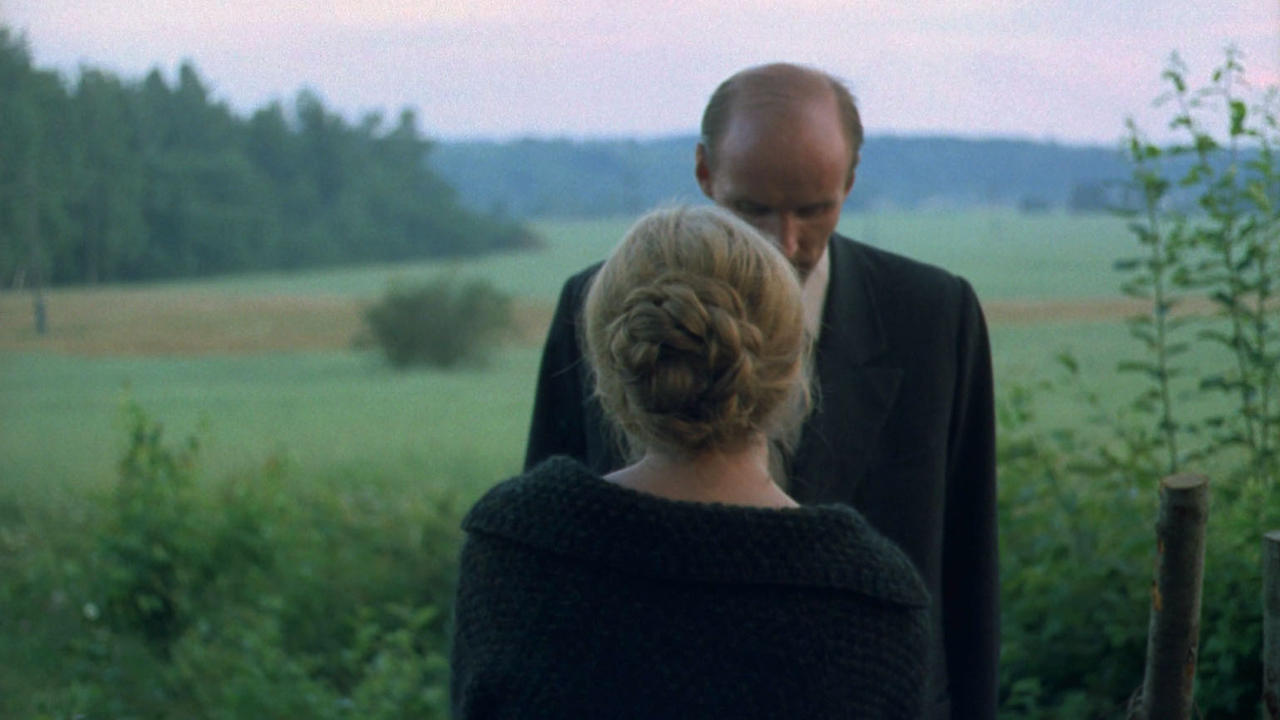
The most autobiographical of Tarkovsky’s films, and perhaps his most difficult, any attempt to force it into a decipherable structure remains futile. It is about memory and emotion, and how they are structured by our brain. In this respect Tarkovsky came closer than anyone else to truly representing how the human mind picks and chooses certain images and moments from our lives in order to make sense of what it’s all about.
It takes place within the mind of a forty year old man, who we only briefly see, but also provides voiceover. Switching between three time periods, pre-World War Two, War Time, and after the War, it is a portrait both of the nation and the man, making it one of the greatest depictions of the Soviet Era.
It is credit to Tarkovsky’s vision that he could hold the audience’s interest without having to force upon them the usual conventions of narrative. Instead he focuses on startlingly beautiful images — such as the Mother, the grass, the slaughtering of the chickens, and the camera panning through the hallway — in order to impress his feeling of time upon us.
In this sense he uses stream-of-consciousness, combined with the reading of his father’s poetry, to conflate the past and the present to create a work that exists in neither time period. It may prove difficult for some people to watch, but its rewards are manifold.
Originally divisive upon its release, it is now universally recognised as a uniquely transcendent masterpiece. Its influence can be seen in one of the most acclaimed films of the 21st Century, Terence Malick’s The Tree of Life.
2. Solaris (1972)
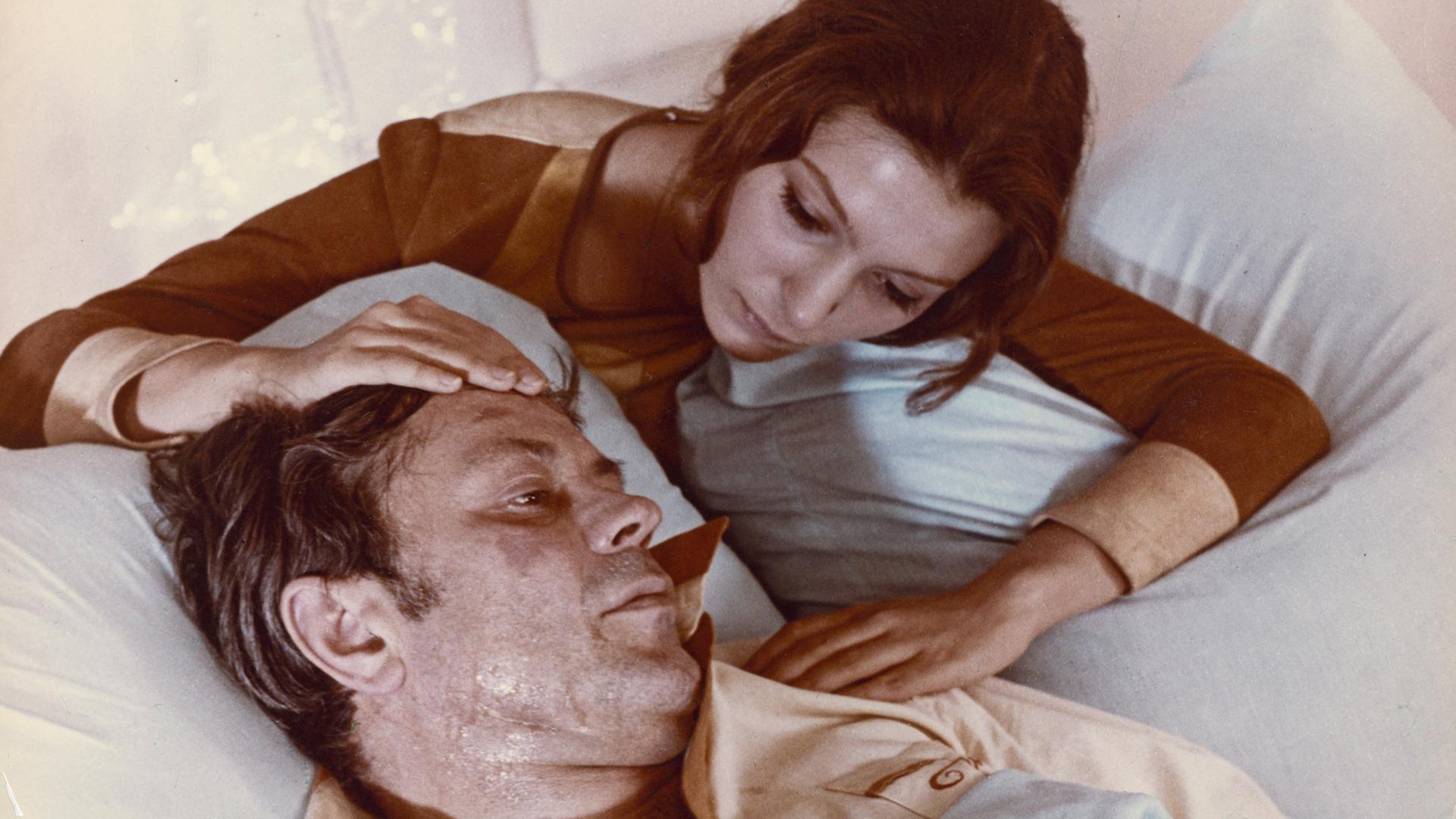
Often sidelined as Tarkovsky’s somber answer to Stanley Kubrick’s more bombastic 2001: A Space Odyssey, this is actually a false equivalency. Where Kubrick’s film looked towards the fourth dimension to imagine something existing beyond man, Tarkovsky was more interested with Solaris in depicting one man and his personal journey through space, and how that intersects with ideas of grief and self-identity. They are two very different films.
Taking place both on earth and outside a mysterious planet with a beautiful and mysterious ocean, Solaris sees the auteur bringing a new sensibility to the science-fiction realm. Whereas other filmmakers may have used the genre in order to start high adventures, Tarkovsky told a deliberately slow-paced story in order to bring the inner lives of his characters to the fore.
It concerns a psychologist who goes to a space station in order to find out what has happened to the people on board, only for a duplicate of his late wife — who committed suicide— to be created by the alien planet they are circling. She seems self-aware and intelligent, yet she does not know of her own death.
With this concept Tarkovsky truly probes what it means to be in love with somebody. Although it uses mystery in order to propel its conceit, it is in fact not much of a mystery at all. Anyone looking for easy resolution, or contact with a different species, better turn away, as in its slow rhythms Tarkovsky is less interested in what may constitute alien life than what may constitute human life, by far the harder question.
1. Andrei Rublev (1966)
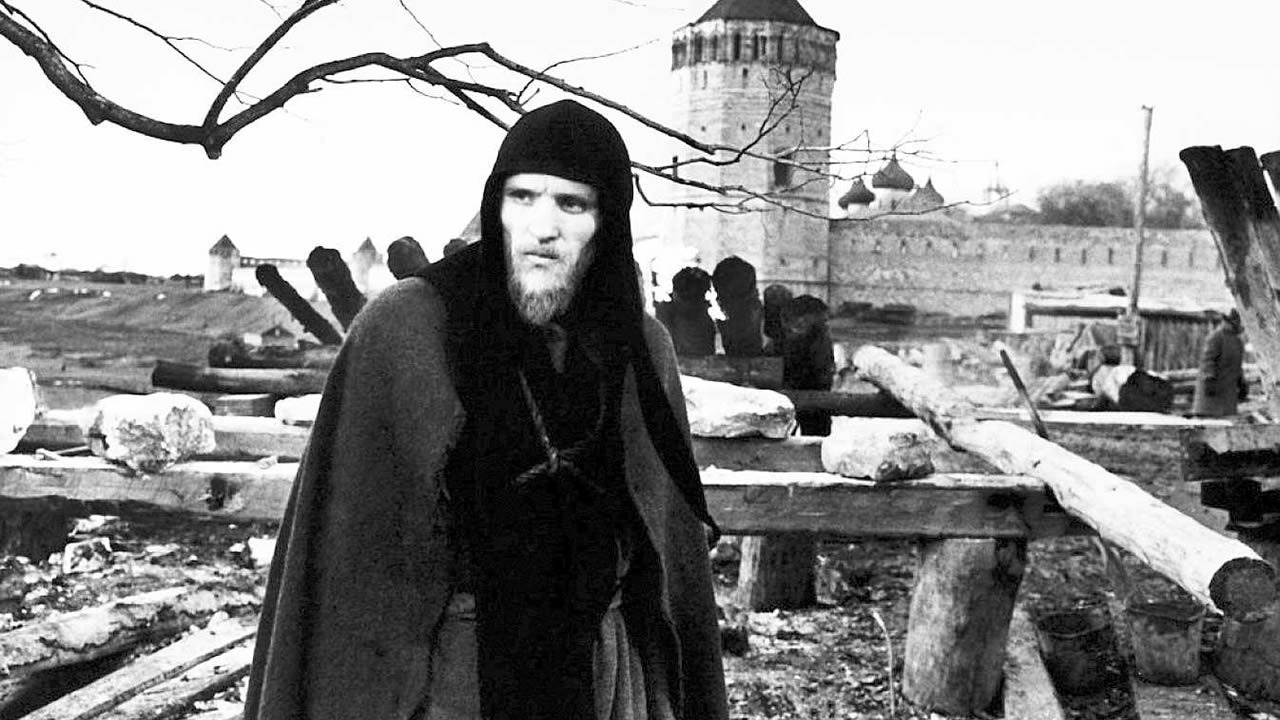
His unrivalled masterpiece, Andrei Rublev is both Tarkovsky’s longest film and his most complete experience. Set in the 15th century, it is a religious epic about the nature of faith, suffering and the relation of life to art.
Famous for never showing the famous icon painter at work, Andrei Rublev instead seeks to understand the soul of an artist through the way that he lives his life. Initially banned by the Soviet Union upon its release, as its religious content was in contradistinction to Soviet atheist propaganda, the 205 minute long film is a expertly rendered depiction of a country going through a period of intense change.
From the very first scene with the hot balloon to the intense battle sequences — replete with real animals being murdered for the sake of cinema — Andrei Rublev sees Tarkovsky at his most expansive and expressive. Life is considered here at every single spectrum, from the horrors of war to the wonder of children. Yet perhaps it is in the final sequence that Tarkovsky makes his claim as the greatest filmmaker of all time.
Notably for hardly featuring the titular character at all, it concerns the creation of a bell for the grand prince, lead by a tenacious young bell-maker’s son who ironically knows little about how to do so. Never in cinema has the value of faith in committing good deeds been so well-rendered. At first viewing it may seem like an odd scene to end a movie with, but it helps to wonderfully express the legacy of Russia’s most beloved artist.
Author Bio: Redmond Bacon is a professional film writer and amateur musician from London. Currently based in Berlin (Brexit), most of his waking hours are spent around either watching, discussing, or thinking about movies. Sometimes he reads a book.